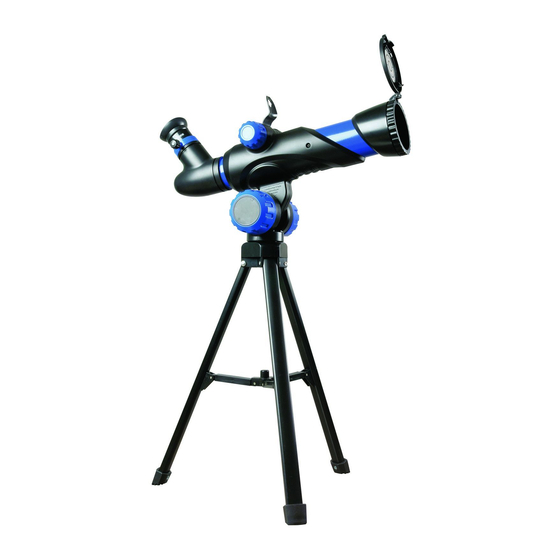
Summarization of Contents
Installation and Setting Up
Supervise and Check Installation
An adult must supervise and check the installation before use.
Eyepiece Usage and Care
Handle Eyepieces with Care
Clean eyepieces with a soft cloth and store them in their cases after use.
Conditions for Good Observation
Prepare for Clear Night Skies
Good observations need a clear night sky and favorable weather conditions.
Activity: Observe a Clock
Practice Stabilizing Your Image
Learn to stabilize your image by practicing with daytime objects like a clock tower.
Activity: Observe an Aircraft
Track Moving Objects
Learn to target and follow moving objects like aircraft using the telescope.
Activity: Observe Animals in Trees
Observe Canopy Wildlife Quietly
Observe animals in the forest canopy by making as little noise as possible.
Activity: Observe Seabirds
Observe Gliding Seabirds
Observe gliding seabirds at the coast with the 20 mm eyepiece.
Activity: Observe Mountain Animals
Observe Mountain Wildlife
Observe mountain animals like ibex, chamois, and birds of prey in summer.
Activity: Moon Phases
Demonstrate Moon Phase Changes
Use a light source and a ball to demonstrate the different phases of the moon.
Activity: Observe the Moon
Identify Lunar Features
Observe the moon and identify craters, plains, and mountains.
Solar System Map
Understand Planetary Alignment
Learn about the ecliptic and planetary alignment in the solar system.
Solar System Scale Model
Build a Scale Model of the Solar System
Understand planetary distances by creating a scale model using toilet paper.
Observing Shooting Stars
Locate Star Radiants
Learn to find the radiant, the area where shooting stars seem to originate.
Navigating the Night Sky
Use Your Sky Map
Learn how to use your sky map to orient yourself and identify celestial objects.
Observing Constellations
Identify Major Constellations
Learn to identify constellations like Ursa Major, Ursa Minor, Cassiopeia, and Cepheus.
Observing Bright Stars
Spot Polaris and Vega
Learn to observe bright stars like Polaris, Vega, Betelgeuse, and Capella.
Rocket Experiment: Bottle Launch
Assemble the Rocket Bottle
Learn how to assemble a bottle rocket for a launch experiment.
General Safety Information
Age and Choking Hazard
Warnings for children aged 8+ and choking hazard for parts under 36 months.
Eye Protection Warning
Never look directly at the sun or a strong light source with the telescope.


Need help?
Do you have a question about the TS006B and is the answer not in the manual?
Questions and answers